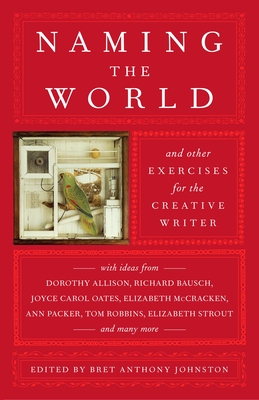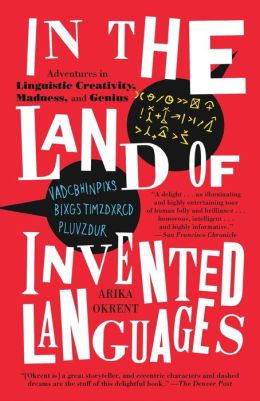I know I said I’d be taking a break until the fall (and I
will!), but I’d meant to post this list of my all-time top favorite resources
for writing, so enjoy this last Wednesday post before I fade away into the
sunshine…
Walk into almost any bookstore and you’ll see a shelf of writing
instruction books, usually with loopy, poetic names like Capturing the Muse or Mastering
the Craft. It can be a little overwhelming to figure out which books are
actually helpful, so here’s my list of my all-time top favorite books and
resources.
GENERAL WRITING
Bird by Bird: Some
Instructions on Writing and Life, Anne Lamont
One of the most popular writing guides out there, and for
good reason. Anne Lamont’s book reads more like a book of thought-provoking,
philosophical essays than a guide to writing. It’s beautifully-written and funny
but still full of useful and practical tips for writing, editing, and
publishing fiction. It’s a book about writing that speaks in a writer’s
language, and it’s a must for beginners and experts alike.
Naming the World: And Other
Exercises for the Creative Writer, Bret Anthony Johnston
I’m a little biased here because Bret Anthony Johnston (who
is also a short story writer) was my writing professor in college. But I’m not
at all exaggerating to say he was one of the—if not the—best professor I had, smart and engaging and just demanding
enough to coax out your best work. I’ve heard other writers recommend his
writing guide, which is based off his classroom techniques and full of
exercises from other writers like Joyce Carol Oates and Tom Robbins. There are
so many smart little points in this book—from how to get dialogue just right to
how to craft characters—and when I’m stumped, I still think back to the things
Bret taught me in class.
HISTORICAL FICTION
Dictionary of American
Slang, Barbara Ann Kipfer and Robert L. Chapman
Oh! This! Book! This is possibly my favorite book that I’ve
bought this year, and it sits in a lofty place on the side of my desk every
single day. Basically, it gives the year and first usage of slang, and it is
absolutely indispensable for a historical fiction writer. I discovered it when
I was looking for the origins of “to have a stick up one’s ass” and although
the phrase turned out to be too modern for me (1930s, bummer), it happily led
me to this book. Once you realize how many idioms and phrases we use on a daily
basis, it feels almost impossible to write historical fiction without something
like this. I’m constantly reaching for it and constantly surprised by what I
learn (like that lollapalooza dates
to 1904 or the first use of the phrase dollars
to doughnuts).
When I need origins of specific words, this online
dictionary is a life-saver. It’s how I knew I could write “the pain rocketed up
my arm” in my 1870s historical fiction, because by 1860, people were already
using the word to mean “to spring like a rocket.” While it’s not as good with
phrases as the Dictionary of American
Slang, this etymology dictionary makes up for it by providing detailed word
origins and an easily-searched database.
SCIENCE FICTION AND FANTASY
The Physics of Star
Trek, Lawrence Krauss
Although arguably one of the most fun parts of writing SF/F
is getting to imagine crazy technologies, I enjoy my fiction with a dash of
reality, and Lawrence Krauss’s book is a must. Krauss breaks down popular
sci-fi tech like laser shooters, faster-than-light travel, and “beaming” and explains
what would and wouldn’t work in the real world. While full of useful scientific
information, it’s written for laypeople, and it’s a fantastic resource for
anyone building a realistic, plausible sci-fi.
In the Land of
Invented Languages: Adventures in Linguistic Creativity, Madness, and Genius,
Akira Okrent
Akira Okrent
Love, love, love
this book! Such a great resource for sci-fi or fantasy writers or anyone who wants
to attempt the daunting task of creating a unique language or method of
communication for their book. Written from a linguist’s point of view, In the Land of Invented Languages is a
fascinating history of the development of languages, from Esperanto to Klingon.
What’s great about it is that it so cleverly describes the different ways
people interact with and conceive of language, a perfect jumping-off point for
creating your own fantasy language.
CREATIVITY
The Art of Looking
Sideways, Alan Fletcher
Technically, this is a book about design, but more broadly,
it’s a book about how to see the world in all its beautiful, weird,
serendipitous angles. It’s a huge book, but I’ve carted it around since high
school, and every time I open it up, I learn something new. Part humor, part
memoir, part philosophical journal, The
Art of Looking Sideways is just a special book, full of quotes, drawings,
photographs, and other musings on the creative process. Anyone in the creative
field, from a painter to a copy writer to a comedian, can benefit from leafing
through.
Drawing on the Right
Side of the Brain, Betty Edwards
This is another book that’s technically meant for art
students, but it’s so rich that writers can learn a lot from it, too. The book’s
main tenet is that artists need to understand and utilize the “right,” or creative,
side of the brain. Essentially, it teaches you how to bypass the practical,
logical constraints of creative work and access the imaginative, free part of
your subconscious. I’d love to see a Writing
on the Right Side of the Brain knock off, but until then, this book gives
all kinds of artists valuable tools for understanding their own creativity.
PODCASTS
The Nerdist
Hosted by comedian Chris Hardwick, The Nerdist podcast features long-form interviews with some of the
best and brightest creative minds of the day, from Tina Fey to Mel Brooks to
Tom Hanks. It focuses on comedy, but there’s so much writers can learn and
relate to listening to these interviews; I can’t tell you how many times an
actor or writer or comedian has talked about the grind of working through new
material, facing rejection, or the snake-eating-its-own-tail feeling of finding
and keeping work in a creative field. Favorite interviews for writers: Donal
Logue, Conan O’Brien, Neil Gaiman.
The Moth
A must for storytellers. The
Moth podcast culls the best stories from its country-wide storytelling
evenings, which are often open mics that anyone can participate in. What I love
about The Moth is the sheer diversity
of stories—homeless recovering addicts share the stage with bubbly party girls
and prize-winning scientists. It’s a great lesson in voice, in capturing an
audience, and in simple storytelling. Every time I listen to The Moth, it reminds me of why I love
stories: they bring us together to listen to—and learn from—each other.
Do you have any favorite writing resources? Leave a note in
the comments!











This comment has been removed by the author.
ReplyDelete